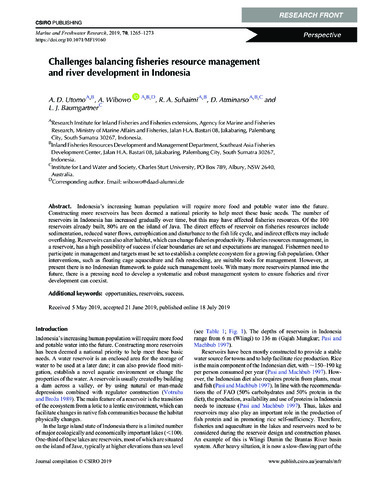Challenges balancing fisheries resource management and river development in Indonesia
นามธรรม
Indonesia’s increasing human population will require more food and potable water into the future. Constructing more reservoirs has been deemed a national priority to help meet these basic needs. The number of reservoirs in Indonesia has increased gradually over time, but this may have affected fisheries resources. Of the 100 reservoirs already built, 80% are on the island of Java. The direct effects of reservoir on fisheries resources include sedimentation, reduced water flows, eutrophication and disturbance to the fish life cycle, and indirect effects may include overfishing. Reservoirs can also alter habitat, which can change fisheries productivity. Fisheries resources management, in a reservoir, has a high possibility of success if clear boundaries are set and expectations are managed. Fishermen need to participate in management and targets must be set to establish a complete ecosystem for a growing fish population. Other interventions, such as floating cage aquaculture and fish restocking, are suitable tools for management. However, at present there is no Indonesian framework to guide such management tools. With many more reservoirs planned into the future, there is a pressing need to develop a systematic and robust management system to ensure fisheries and river development can coexist.
Keywords
opportunities reservoirs successการอ้างอิง
Utomo, A. D., Wibowo, A., Suhaimi, R. A., Atminarso, D., & Baumgartner, L. (2019). Challenges balancing fisheries resource management and river development in Indonesia. Marine and Freshwater Research , 70(9), 1265-1273. https://doi.org/10.1071/MF19160
DOI
10.1071/MF19160Type
ArticleISSN
1323-1650; 1448-6059คอลเลกชัน
- Journal Articles [12]




